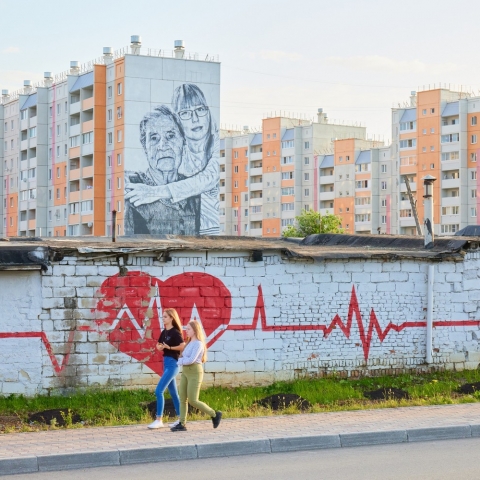-

“SATKA: SINGLE-INDUSTRY TOWN OF MULTI-TOURISM”
-
Address:
“The article covers one of the single-industry towns of Chelyabinsk Region — Satka — as a history of success at methodical transformation of an industrial town into a center of environmental and event tourism in addition to industrial tourism.” This is a quote from the summary of the scientific article Satka: Single-Industry City of Multiculturalism, published by Labyrinth. Theories and Practices of Culture. The author of the article is Yekaterina Bugrova, Senior Professor at the Socio-Cultural Service and Tourism Section of the History Faculty Department, the Ural Institute of Humanities named after the First President of Russia Boris Yeltsin (Yekaterinburg).
The researcher believes that “Satka is a city that breaks the stereotypes about depressed single-industry towns, an example of successful implementation of socio-cultural projects that make a single-industry town an attractive place to live and visit in spite of its location – far away from metropolitan cities, such as Chelyabinsk and Yekaterinburg.”
Speaking of the relevance of developing domestic tourism, Yekaterina points out that “new points of attraction are starting to appear in regions, offering various options for recreation” (In this context, she is discussing the popularity of high-intensity multi-tours, ed. note). Chelyabinsk Region and the single-industry town of Satka in particular seem to represent a particularly interesting example. According to Yekaterina, our town has combined all of the most popular types of tourism: ecotourism, industrial tourism and art tourism.
“The single-industry town of Satka in Chelyabinsk Region is an important center of environmental and industrial tourism,” she writes. “Satka District is also popular with those who like active recreation and family travel. Moreover, Satka is of interest to fans of both classical and modern art. Therefore, this single-industry town in the South Urals area is able to generate a diverse tourism product for all kinds of people… Satka has most unexpected tourist attractions that exist side-by-side to each other.”
Looking at those “products” and “attractions” and at projects to develop event tourism, the scientist speaks of a huge role of Magnezit Group and the Sobranie Cultural Initiative Support and Preservation Fund in the development of the area. She gives examples of cooperation with various cultural and education institutions and says that there is a special focus on culture industries in Satka.
“The combination of art of various historical periods is Satka's advantage over many single-industry towns committed to changing their socio-cultural image. There are creative and art spaces being created,” writes Yekaterina, mentioning Art-Satka as an example. “Tourists also take interest in the corporate museum of Magnezit Group and the Magnezit Cultural Center, which has kept its original layout. Naturally, Satka's backbone company itself is turning into a tourist attraction: there is a unique tour where tourists get the chance to visit Russia’s only industrial facility making premium-class magnesia refractory materials.”
The author concludes at the end that “what sets Satka apart from many other single-industry towns is the fact that it's a cultural center as well as an industrial one. Satka has a distinct visual image thanks to its design code of public spaces that has been implemented and to the legacy of various activities planned and implemented by the town…”
To read more, visit the website of the publication: https://labyrinth.ivanovo.ac.ru/?s=Сатка
OUR INFO:
Labyrinth. Theories and Practices of Culture is a journal that has become a platform for multi-disciplinary dialogue, information exchange and discussion of relevant culture issues between Russian and foreign researchers and practitioners.
The journal consists of two autonomous parts, the first one being a continuous intellectual platform with regularly updated sections (society, heritage, city, science, industrial zone, art, etc.), while the second one is the academic part with new issues released four times a year, which contain scientific reviews, problem-based and applied science articles focusing on the following scientific areas: “Culture. Culturology”, “History. History Studies”, “Literature. Literary Studies. Folklore”.
Source: Magnezitovets. Photo by Ivan Kurinnoy.
-
26.08 - 26.08
DIARY OF THE THIRD INDUSTRIAL BIENNALE
-
28.11 - 28.11
MY SATKA FESTIVAL WINS THE CONTEST OF CORPORATE VOLUNTEER PROJECTS
-
13.10 - 15.10
COOPERATION WITH VGIBL NAMED AFTER M.I. RUDOMINO
